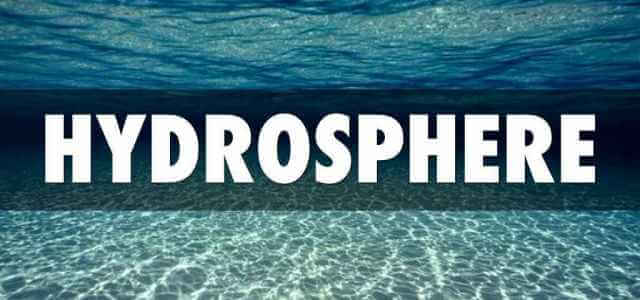Hydrosphere Definition
Introduction
The surface of the Earth is made up of about 71% water. These waters can be found in lakes, rivers, streams, and oceans. A portion of the amounts is frozen similarly. It also manifests as water vapor in the atmosphere. In other words, "hydrosphere" refers to all the water on our globe. It is essentially the water element of the Earth. Water in the air, underground, and on the globe's surface are all featured. Moreover, this region of the Earth can be composed of liquid, gas, or ice.

Overview of the Hydrosphere
- The Hydrosphere is the geographic area of the Earth that contains all of the Planet's fluid. Oceans, seas, lakes, ponds, rivers, and streams are samples of where water can be stored. In other words, although the oceans only cover 71% of the Earth's surface, the Hydrosphere is quite large. The hydrological cycle depends on the Hydrosphere's mobility and the water interchange between the Hydrosphere and cryosphere.
- Water is always moving and interacting, which helps create currents that transfer warm water from the tropics to the poles, regulating the temperature of the Planet. Water exchange is necessary for the Hydrosphere to function. Most notably, the Hydrosphere is primarily composed of water.
- Aside from that, it also contains a few contaminants or additions, such as dissolved minerals, gases, and particles. While some of these are important for maintaining the health of ecosystems, others are seen as pollution.
- For instance, excessive sediment can harm the ecosystem in the area. In contrast, low amounts of dissolved oxygen in the water can lead to hypoxic conditions that can harm ecosystems.
- Hence, the ecosystems surrounding the various components of the Hydrosphere need to be in a delicate balance to be healthy. The Hydrosphere is also constantly in motion. Ponds and lakes don't have as noticeable motion as rivers and streams.
- Additionally, we may see some ocean and sea motions on a global scale that move water across long distances, such as between continents or between the poles and tropics.
- Essentially, they transport cool water from the poles towards the tropics and warm water from the poles. Both the ocean's surface and its depths have these currents.
Significance of the Hydrosphere
The fact that water supports a variety of life forms is the Hydrosphere's main significance. Furthermore, it controls the atmosphere and plays a crucial part in ecosystems. The Hydrosphere covers all the water on the Earth's surface. It comprises groundwater, water in the lower atmosphere, freshwater, saltwater, and frozen water.
We will now examine its capabilities:
- Water makes up around 75% of every living organism's cell, which enables the cell to function properly. Cells wouldn't be able to function normally without water because life cannot survive without it.
- Humans require water in a variety of ways. The most obvious use of water is for drinking, but it is also used in industries and for domestic chores like washing and cleaning. Moreover, we use water to generate electricity through hydropower.
- Many types of plants and animals can survive in the Hydrosphere. Several ions, nutrients, gases, and nutrients are dissolved in water, including ammonium and nitrite (NO-2). For life to exist, several ingredients must be present in water.
- The distinctive qualities of the water are its high boiling point. This indicates that water takes a long time to heat and cool down. It helps to maintain Earth's temperatures within a range that is suitable for the existence of life.
Components of Hydrosphere
As discussed, Hydrosphere is any area on Earth that stores liquid water. There is an extensive list of formations that make up the Hydrosphere, including:
- Oceans: The majority of the water on our Planet is salt water, and the oceans are where the majority of this salt water is found.
- Freshwater: Freshwater is much less abundant than saltwater and is present in various places.
- Surface water: Surface freshwater sources include lakes, rivers, and streams.
- Groundwater: Freshwater held beneath the surface makes up a minor fraction of the freshwater on Earth.
|

 For Videos Join Our Youtube Channel: Join Now
For Videos Join Our Youtube Channel: Join Now










